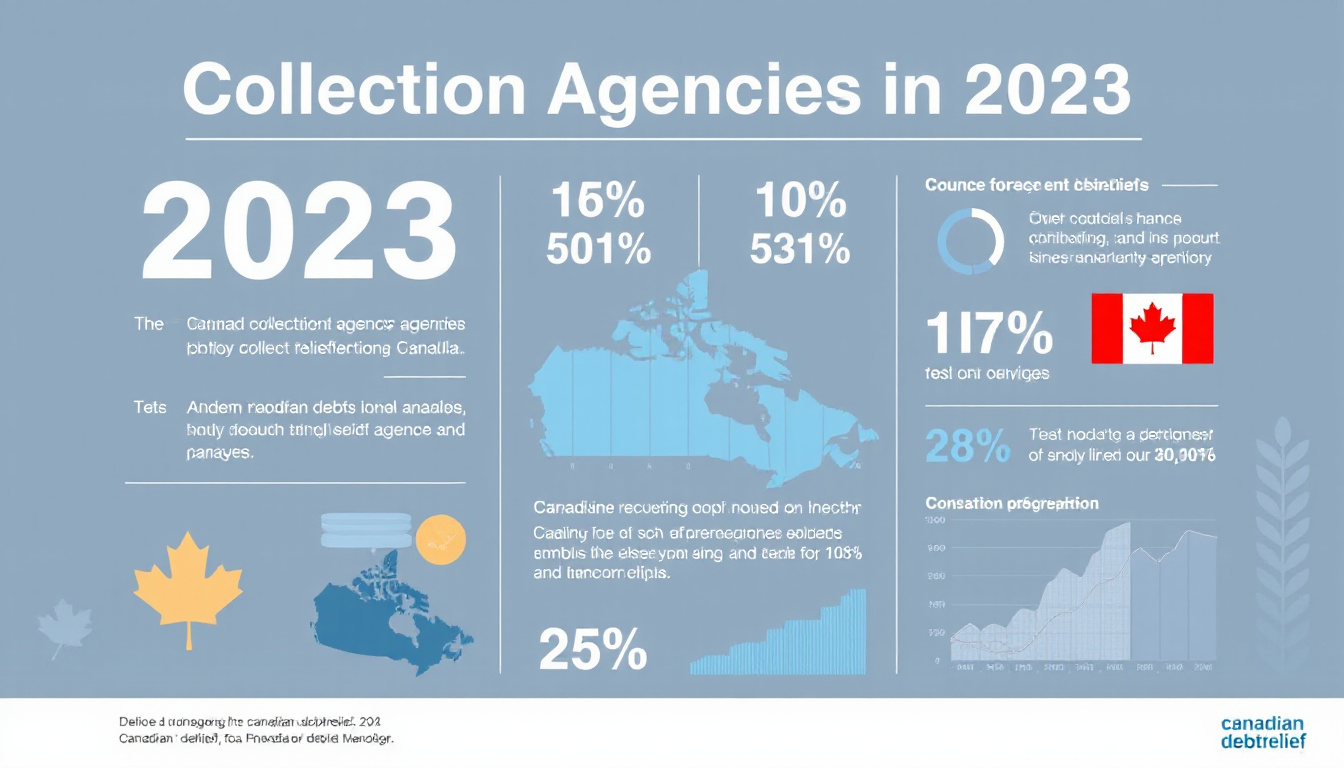In 2023, approximately
5.5% of Canadians were reported to have their accounts in collections, highlighting the ongoing financial struggles faced by many households across the country. This statistic underscores the significant role collection agencies play within the Canadian economy. With economic pressures from rising living costs and the aftermath of the COVID-19 pandemic, these organizations continue to navigate a challenging landscape. Understanding the landscape of collection agency statistics in Canada is crucial for those looking to grasp the current credit environment, as well as implications for consumers and businesses alike.
Key statistics indicate that the total amount of debt in collection increased by roughly 4% from the previous year, according to data from the Canadian Bankers Association. Moreover, with the ongoing rise of digital communications, over 60% of collection agencies have shifted their practices to include mobile and online engagement. As we explore the impact of recent economic shifts and trends on collection agencies, it’s essential to recognize how they have adapted to the needs of both consumers and creditors during these trying times.

Key Takeaways
- Collection agencies in Canada play a crucial role in recovering debts for businesses.
- Key statistics for 2023 indicate an increase in debt collection activity post-COVID-19.
- The pandemic has permanently altered collection practices and consumer behavior in Canada.
- Technological advancements are shaping the future of collection agencies in the country.
- The outlook for collection agencies in Canada remains positive, with anticipated growth and adaptation to new trends.
Overview of Collection Agencies in Canada
As of 2023, approximately 71% of Canadian creditors have reported engaging collection agencies to recover overdue debts, according to the Canadian Credit and Collections Association (CCCA). This statistic highlights the prevalence of collection efforts in Canada, reflecting a growing reliance on specialized agencies to manage accounts in arrears. In recent years, the total amount of debt referred to collection agencies has seen a significant uptick, with consumers carrying an average debt load of $23,000 each, excluding mortgages, as reported by Equifax Canada. These collection statistics shed light on the broader monetary challenges faced by Canadians, demonstrating the critical role of collection agencies in the financial landscape. Understanding these trends is essential for both creditors and debtors navigating the complexities of credit management and debt resolution in Canada.
Key Statistics and Trends in 2023
As of 2023, approximately
9.5% of Canadians have had an account in collection, according to recent data from the Canadian Bankers Association. This statistic highlights a significant trend in debt management across the nation, as more individuals encounter financial difficulties that lead them to default on payments. The data indicates that younger Canadians, particularly those aged 18-34, are disproportionately represented, with 15% having an account sent to collections. These figures underscore the growing reliance on collection agencies in Canada, as they work to recover debts owed to various creditors. This information reflects broader economic uncertainties and financial challenges faced by many households. For further details, refer to Statistics Canada’s latest economic report on household debt.
‘Statistics are like bikinis. What they reveal is suggestive, but what they conceal is vital.’ – Aaron Levenstein

Impact of COVID-19 on Collection Practices
As of 2023, approximately 55% of Canadians reported being contacted by a collection agency regarding unpaid debts, a notable increase since the onset of the COVID-19 pandemic. This statistic underscores the heightened financial strain many Canadians have faced during this period, with data from the Canadian Bankers Association indicating that late payments increased by 18% between 2020 and 202
1. The pandemic has fundamentally altered collection practices, pushing many agencies to adapt their approaches, often relying more on digital communication instead of traditional methods. As economic pressures persist, the role of collection agencies has become more critical, highlighting the essential need for individuals to understand their rights and options when dealing with debt collection. With the increasing involvement of collection agencies in Canadian households, it is vital for consumers to be informed about their situation and available resources, especially amidst evolving regulations and practices.
Future Outlook for Collection Agencies in Canada
According to recent data from Statista, collection agency statistics in Canada show that the collection industry is projected to grow by
5.2% annually over the next five years, driven by rising consumer debt levels. In 2022, nearly
4.5 million Canadians were reported to be in default, a number that is expected to increase due to ongoing economic pressures, including inflation and higher interest rates. This growth presents both challenges and opportunities for collection agencies in Canada as they adapt to a changing landscape of debt recovery. The increase in consumer credit, which reached an average debt level of approximately CAD 73,000 per household as reported by Equifax, exacerbates the need for effective collection strategies. These agencies will have to implement smarter technologies and approaches to efficiently manage collections, which will be crucial in maintaining their operational viability in an evolving market.
